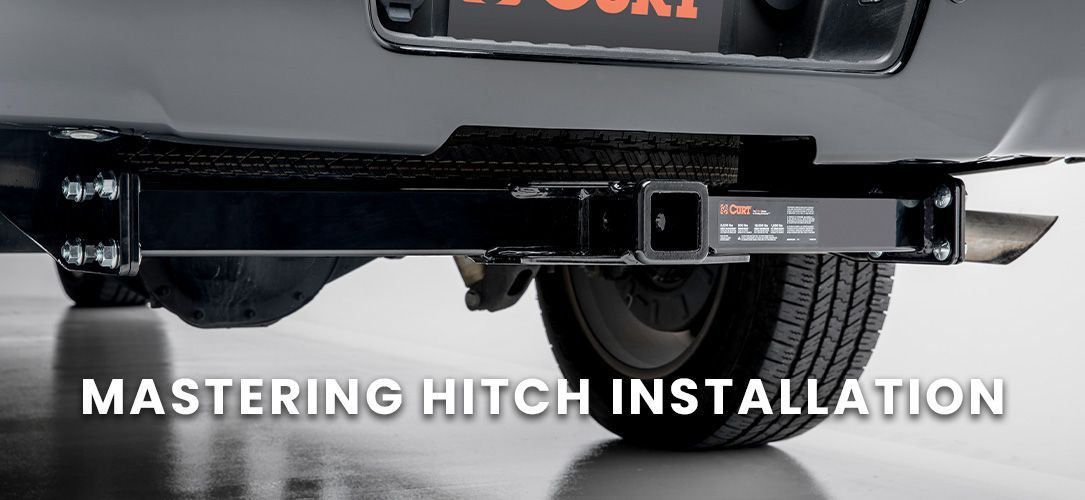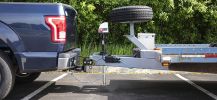Mastering Trailer Hitch Installation: A Step-By-Step Guide
Embarking on a trailer hitch installation can seem daunting for many vehicle owners. However, with the right tools, some patience, and a clear guide, you can equip your vehicle to tow trailers, boats, or campers, enhancing its utility and versatility. This article will walk you through the trailer hitch installation process, ensuring you can undertake this task with confidence.
Understanding Trailer Hitches
Before diving into the installation process, it’s crucial to understand the different classes of trailer hitches and select the one that matches your vehicle’s towing capacity and your towing needs.
Selecting the Right Hitch
- Class 1 Hitches: Perfect for attaching a bike rack or cargo carrier. This hitch may also be able to tow certain lightweight trailers depending on your vehicle.
- Class 2 Hitches: Add cargo space to your vehicle with a cargo carrier or bike rack. For numerous cars, minivans, and crossovers this is an excellent hitch for towing small/lightweight trailers (depending on your vehicle)
- Class 3 Hitches: This versatile hitch is capable of towing many types of trailers. These are available for a wide range of vehicles such as trucks, Jeeps, and SUVs.
- Class 4 Hitches: Made for serious towing, they can handle most non-commercial towing applications, like large boat trailers, full-size campers, and utility trailers. Use this hitch in combination with a weight distribution system for added strength and stability.
- Class 5 Hitches: Built for commercial duty. These hitches are designed to tow the largest trailers from full-size livestock trailers to deluxe RV campers.
Ensure the hitch you choose is compatible with your vehicle’s make and model. Manufacturers often provide a towing guide to help you determine the appropriate hitch class.
Preparing for Installation
The key to a successful trailer hitch installation lies in preparation. Gather all necessary tools and materials before starting to ensure a smooth process.
Tools and Materials Needed
- Socket wrench set: For tightening bolts and nuts.
- Torque wrench: To apply a specific torque to the hitch bolts, as per manufacturer specifications.
- Pry bar: Helpful for aligning holes during the installation process.
- Jack stands and hydraulic jack: To safely elevate your vehicle for undercarriage access.
- Wire brush and lubricant: For cleaning existing threads or preparing surfaces.
- Drill and metal drill bits: In some cases, you might need to create new mounting holes.
Safety First
Always prioritize safety when working on your vehicle. Use wheel chocks to secure the vehicle from rolling and wear protective eyewear to guard against debris. Ensure your working area is well-lit and free of obstacles.
Step-by-Step Installation Process
- Step 1: Vehicle Preparation
- Start by securely elevating your vehicle using jack stands. Ensure it's stable before proceeding. Locate the pre-existing holes in your vehicle's frame—these will be used for mounting the hitch. Use a wire brush to clean the area around these holes, removing rust and debris.
- Step 2: Position the Hitch
- Carefully lift the hitch into position against the frame of your vehicle. It can be helpful to have an assistant during this step. If you’re working alone, you can use a hydraulic jack to hold the hitch in place temporarily.
- Step 3: Secure the Hitch
- Hand-thread the provided bolts into the existing or drilled holes in your vehicle's frame to secure the hitch. Ensure each bolt is started correctly to avoid cross-threading. Once all bolts are in place, use your socket wrench to tighten them loosely, allowing some movement for alignment adjustments
- Step 4: Align and Tighten with Torque Wrench
- Adjust the hitch to ensure it's properly aligned with your vehicle. Once satisfied with the alignment, use a torque wrench to tighten each bolt to the manufacturer's specified torque setting. This is crucial for the safety and longevity of your hitch.
- Step 5: Additional Components
- In some cases, you may need to install additional components like wiring harnesses for trailer lights. Follow the manufacturer's instructions closely for any additional installations.
- Step 6: Recheck Connections
- After installing the hitch and any additional components, it's crucial to double-check all connections. Make sure every bolt is tightened to the specified torque. This step is vital for your safety and the safety of others on the road. Vibrations and road conditions can loosen fittings over time, so this step ensures everything is secure from the start.
- Step 7: Install Wiring Harness
- If your towing setup requires electrical connections for trailer lights and brakes, now is the time to install the wiring harness. Route the wiring from the hitch to the vehicle's tail lights. Connect the wires according to the instructions, ensuring a secure and waterproof connection. Test the connection with your trailer or test light to ensure all signals work correctly.
- Step 8: Safety Checks and Adjustments
- Before you hit the road, conduct a thorough safety check. This includes verifying that the hitch is properly secured, the wiring harness functions correctly, and the trailer itself is correctly attached to the hitch. Check the trailer's brake lights, turn signals, and, if equipped, the brake system. Adjust the hitch ball mount as needed to ensure the trailer sits level when attached to your vehicle.
- Step 9: Test Drive
- Take a short test drive with your trailer to ensure everything is working correctly. Pay attention to the handling, braking, and overall vehicle performance. Listen for any unusual noises that might indicate a problem with the installation. If everything checks out, you're ready to tow.
How Rigid Hitch Can Help
At Rigid Hitch, we understand that trailer hitch installation can be a daunting task for many vehicle owners. That's where we come in. With years of experience in towing solutions, we're here to support you through every step of the installation process.
- All The Information Your Need
- Our team of experts is always ready to offer advice and answer any questions you might have about trailer hitch installation. Whether you're unsure about the right hitch for your vehicle, need help selecting towing accessories, or have questions about the installation process, we're here to help.
- The Best Products
- We offer a wide range of high-quality trailer hitches and towing accessories designed to meet your specific towing needs. All our products are rigorously tested to ensure they meet the highest safety standards, giving you peace of mind when you're on the road.
- After-sales Support
- For those who prefer professional installation, Rigid Hitch can assist. We can guide you to trusted professionals in your area who can install your hitch quickly and safely. Plus, we're always here to provide post-installation support, ensuring you have everything you need for a successful towing experience.
Mastering trailer hitch installation is a valuable skill that can greatly expand your vehicle's utility. By following this step-by-step guide and leveraging the support and expertise of Rigid Hitch, you can ensure a safe, efficient, and successful installation. Remember, the key to successful towing lies in proper preparation, attention to detail, and ongoing maintenance.
-Happy towing!









